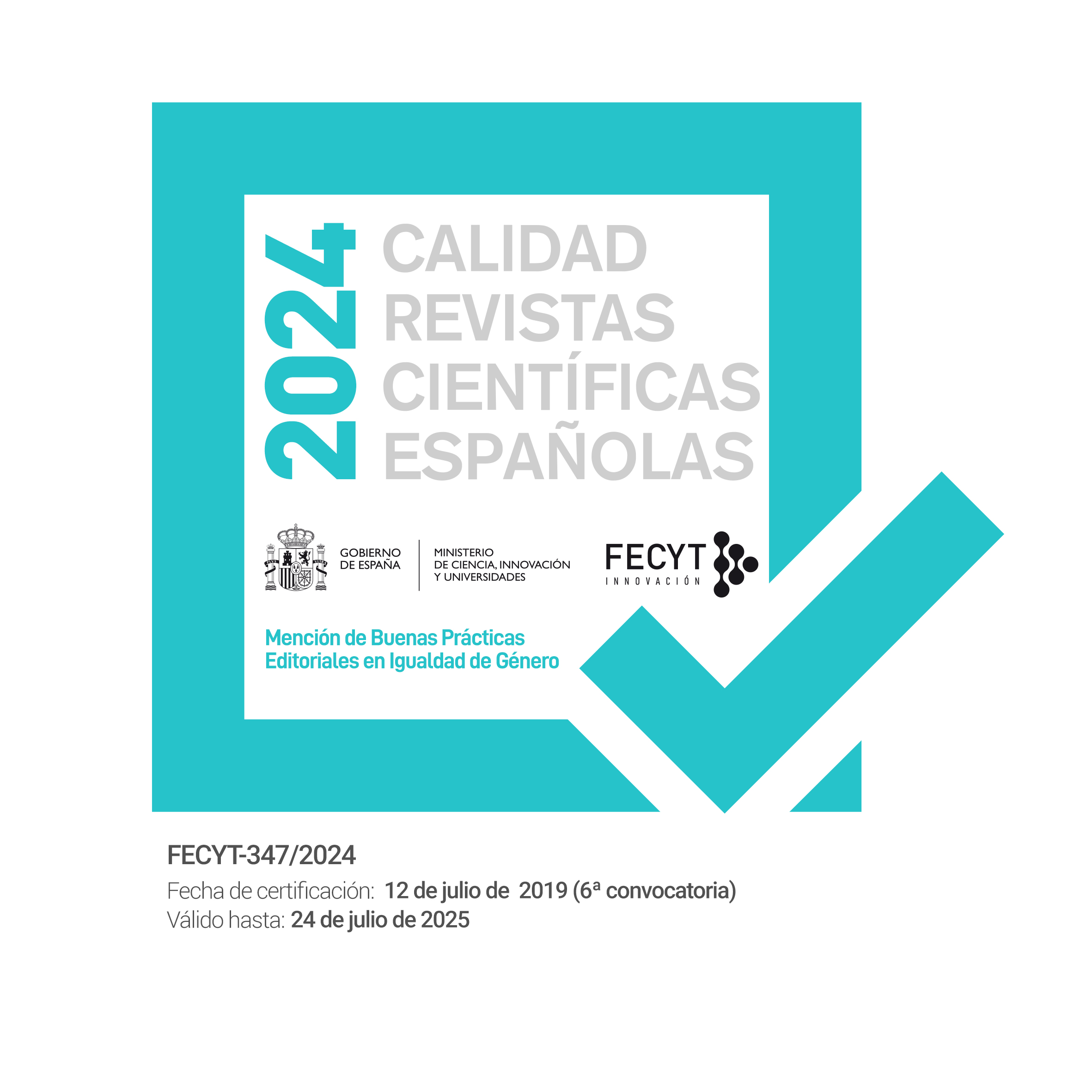Resonant Spaces: from the soundscapes of the trenches to the hearing of silence in Alfonso Reyes and John Cage
DOI:
https://doi.org/10.5944/etfvii.4.2016.15523Keywords:
Silence, Hearing, Soundscape, War, Sound art, Phonetic poetry, AvantgardesAgencies:
Ministerio de Economía y Competitividad [Proyecto Ref. HAR 2014-58869-P]Abstract
The present paper addresses the issue of the implication of silence on hearing. The main objective is to show why silence is in its action, a resonating space, i.e. a place for the reception, creation, and interpretation of sense. In order to achieve such issue are discussed in the text: the relevance of silence for the arts, according to the two post-war periods, the perception of silence and awareness of hearing during the Great War, the listening exercises in Spanish Avantgarde, observations on John Cage’s 4'33'' piece of work, and other contemporary interpretations of that piece. The text will expose not only that the contribution of Cage has its nuances, but also the historical significance of the practices in the Spanish territory. This highlights the determination that silence implies for the arts and society because, from the Twentieth Century, silence has continued being central to the dialogic and coextensive relationship that exists between them.Downloads
References
ADORNO, Theodor: Notas sobre literatura. Madrid, Akal/Básica de Bolsillo, 2003.
BALL, Hugo: La huída del tiempo. Barcelona, Acantilado, 2005.
BARTHES, Roland: El grado cero de la escritura. Buenos Aires, Editorial Jorge Álvarez, 1967.
BECKETT, Samuel: Watt. Barcelona, Editorial Lumen, 1970.
BLANCHOT, Maurice: El libro por venir. Madrid, Trotta, 2005.
CAGE, John: Silencio. Madrid, Árdora, 2007.
CASTILLA DEL PINO, Carlos (comp.): El silencio. Madrid, Alianza Editorial, 1992.
CHION, Michel: La audiovisión: introducción a un análisis conjunto de la imagen y el sonido. Madrid, Grupo Planeta, 1993.
COLODRO, Max: El silencio en la palabra. Aproximaciones a lo innombrable. Chile, Editorial Cuarto Propio, 2000.
DANIELS, Dieter y ARNS, Inke (eds.): Sounds like Silence. John Cage—4’33’’. Silence Today. Leipzig, Spector Books, 2012.
DARÒ, Carlotta: “Un debate cultural sobre Muzak”, en RODRÍGUEZ LÓPEZ, Red (ed.): Foro Mundial de Ecología Acústica: Megalópolis sonoras. Identidad cultural y sonidos en peligro de extinción. México, Fonoteca Nacional, 2009.
GARRIGA, Rocío: “El silencio audible: de la escucha asombrada a la escucha generativa”, Arte y políticas de identidad, 7 (2012), 61-76.
GAY, Peter: Freud. Una vida de nuestro tiempo. Barcelona, Paidós, 1990.
HASSAN, Ihab: The Dismemberment of Orpheus: Toward a Postmodern Litterature. New York, Oxford University Press, 1971.
HOFFMANN, Werner: Los fundamentos del arte moderno. Barcelona, Ediciones Península, 1992.
JAWORSKI, Adam (ed.): Silence: interdisciplinary perspectives. New York, Mouton de Gruyter, 1997.
JÜNGER, Ernst: El Corazón Aventurero. Figuras y caprichos. Traducción de Enrique Ocaña. Barcelona, Tusquets Editores, 2003.
KRAUS, Karl: Contra los periodistas y otros contras. Madrid, Taurus, 1992.
___: En esta gran época: de cómo la prensa liberal engendra la guerra mundial. Buenos Aires, Libros del Zorzal, 2009.
LE BRETON, David: El sabor del mundo. Una antropología de los sentidos. Buenos Aires, Ediciones Nueva Visión, 2007.
MAILLARD, Chantal: “Experiencia estética y experiencia mística”, Revista Interdisciplinar de filosofía, vol. II (1997), 177-191.
MAILLARD, Chantal: “Estética y mística. La doble función de la palabra en la tradición India”, en VEGA, Amador, RODRÍGUEZ TOUS, Juan Antonio, y BOUSO, Raquel (eds.): Estética y religión: el discurso del cuerpo y sus sentidos. Barcelona, Er. Revista de Filosofía Documentos, 1998, 199-210.
MARCHÁN FIZ, Simón: La estética en la cultura moderna. De la Ilustración a la crisis del Estructuralismo. Barcelona, Editorial Gustavo Gili, 1982.
MAZZOTTI, Giovanna y ALCARAZ, Víctor Manuel: “Arte y experiencia estética como forma de conocer”, Casa del Tiempo, 87 (2006), 31-38.
MICHAUD, Éric: La estética nazi. Un arte de la eternidad: la imagen y el tiempo en el nacional-socialismo. Córdoba, Adriana Hidalgo Editora, 2009.
PONCE, Vicente: Frío en los alrededores de la palabra. Valencia, Azotes Caligráficos, 2010.
RÁBADE, Sergio: Teoría del conocimiento. Madrid, Akal, 1998.
REYES, Alfonso et alii.: “El silencio por Mallarmé”, Revista de Occidente, 5 (1923), 238-256.
REYES, Alfonso: Mallarmé entre nosotros. Buenos Aires, Editorial Destiempo, 1938.
RICHTER, Hans: Historia del dadaísmo. Buenos Aires, Nueva Visión, 1973.
ROS, Samuel: Antología. Madrid, Fundación Santander Central Hispano, 2002.
___: El ventrílocuo y la muda, Madrid, Ediciones Libertarias/Prodhufi, 1996.
SÁNCHEZ DURÁ, Nicolás: “Evocación y nuevos testigos de la Gran Guerra”, III Giornata Internazionale della Letteratura Italiana Contemporanea: Cultura italiana e Prima Guerra Mundiale. Valencia, 2015.
SÁNCHEZ DURÁ, Nicolás (ed.): La Guerra. Valencia, Pre-Textos, 2006.
SONTAG, Susan: Estilos Radicales. Madrid, Santillana Ed. Generales, 2002.
STEIN, Gertrude: Writings 1932-1946. Canada, Penguin Putnam Inc., 1998.
STEINER, George: Lenguaje y silencio: ensayos sobre la literatura, el lenguaje y lo inhumano. Barcelona, Gedisa, 1994.
VV.AA: El Descrédito de las Vanguardias Artísticas. Barcelona, Editorial Blume, 1980.
VALESIO, Paolo: “A Remark on Silence and Listening”, Rivista di Estetica, 26 (1985), 17-44.
VITRAC, Roger: “Poison (A Drama Without Words)”, Broom. An International Magazine of the Arts, 5 (1923), 226-228.







